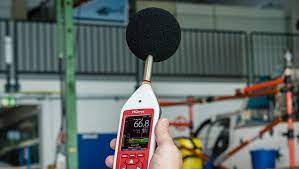
The Benefits of Regular noise Level Testing in the Workplace
Introduction:
Within a entire world where noise contamination is rising, it is increasingly crucial that you evaluate and check noise degrees. Possessing correct data about the level of audio may help determine prospective dangers inside the workplace and make sure that employees are working in a safe and secure setting. It could also be employed to check out promises of hearing loss or injury due to excessive noise visibility. Let’s consider a closer inspection at ways to calculate and monitor noise degrees.
Way of measuring Equipment
Step one in determining seem degrees is to find the proper device for the task. There are numerous forms of measuring tools readily available, each with its very own advantages and disadvantages. By way of example, an integrating-averaging audio level gauge is typically used for workplace tracking applications mainly because it averages measurements over a duration of time instead of supplying an instantaneous snapshot of audio level. This makes it well suited for collecting data over lengthy periods of time or even in locations where the noise level may fluctuate commonly. Alternatively, if you need a more descriptive summary of seems in just a distinct variety (like speech), then you should work with a true-time analyzer rather.
Calibration
After you have preferred your tool, it’s essential to make sure that it can be properly adjusted prior to use. Calibration makes certain that your tool will offer correct specifications with time by compensating for just about any changes in environmental circumstances or another factors that may affect numbers. For example, if you’re having an integrating-averaging sound level meter, then calibrating it by using a guide microphone will ensure that measurements stay regular irrespective of heat or moisture changes inside your work area.
Tracking Outcomes
After your musical instrument is properly adjusted, you can start gathering data on noise amounts inside your workplace. According to the kind of tool being used, this could include recording measurements every few minutes or continuously internet streaming them into a computer system for later assessment. The results ought to be assessed carefully to be able to identify any habits or developments that could indicate potentially dangerous conditions for example excessive noise visibility over prolonged time periods. If needed, corrective measures should then be utilized immediately to deal with any concerns that are exposed during checking sessions.
Summary:
Precisely determining and keeping track of noise degrees is vital for safeguarding worker safety and health in almost any work environment where noisy noise level testing exist consistently. By choosing the right instrument to do the job and guaranteeing proper calibration prior to use, businesses can make certain that their information remains to be trustworthy as time passes while delivering useful ideas into prospective threats posed by excessive noise exposures at work web sites around the globe. By regularly tracking is a result of these tools, companies can better protect their staff from pointless hurt caused by prolonged contact with deafening disturbances at their office.